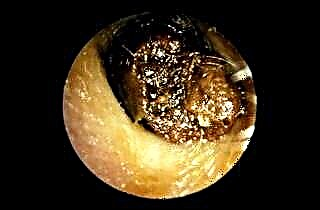The valves of the heart are located in all places where large vessels depart. Their main task is to control blood flow during myocardial contraction so that it moves in a strictly defined direction, therefore, if the structure of one or more valves is disturbed, hemodynamic changes occur, and ischemia of all organs develops against the background of progressive heart failure. Today I propose to cover in more detail the question of why this deviation appears, and how the treatment of acquired heart defects is carried out.
What is acquired vice
Valve lesions, which are caused by various reasons that are not related to intrauterine pathology, are called acquired. They are quite common and often found in my practice. Many people think that this problem is common in older patients. But in fact, most often the formation of a defect occurs in the period from 10 to 20 years.
Medical statistics claim that in terms of frequency of occurrence, the first place is occupied by disorders of the mitral valve (more than 50%), located at the delimitation of the left atrium and ventricle. On the second - the aortic, which is localized at the exit of the aorta from the heart. And about 5% of all disorders are tricuspid and pulmonary. They prevent regurgitation (reflux) of blood in the right heart.
Violations of the structure of the valves that arise for various reasons after the birth of a child throughout life are called acquired defects. They differ from congenital, which are formed in the fetus while still in the womb.
Main causes and types
The main cause of acquired heart defects is rheumatism. With its prolonged course and frequent attacks, stenosis of the mitral and aortic openings, as well as damage to the tricuspid valve, most often occurs. Often, the role of etiological factors is performed by the following pathologies:
- endocarditis caused by infection;
- some types of degenerative processes and connective tissue dystrophy (Marfan and Barlow syndromes);
- heart attack with damage to areas of the heart with a valve;
- atherosclerosis and calcification;
- syphilis;
- chest trauma.
Vice happens:
- Origin: rheumatic, syphilitic, atherosclerotic, etc.
- By the number of affected areas: single (local), combined (stenosis and insufficiency) and combined (the violation affects several structures at the same time).
- According to the degree of hemodynamic disturbance: no change, transient with increasing load and decompensated.

How acquired defects are diagnosed
To make a diagnosis after interviewing and examining the patient, I usually refer to the following studies:
- General and biochemical blood tests, rheumatic tests.
- Electrocardiogram. It helps to find out the degree of neglect of the process, to identify an increase in heart chambers, rhythm disturbances, ischemia.
- Radiography. On it, signs of congestion in the lungs, an increase in the ventricles and atria and the vessels emerging from them are determined.
- EchoCG. Allows using ultrasound to reliably determine the presence of a defect, the degree of deviation, the severity of the reverse blood flow, the size of the valve, the direction of movement of the leaflets, the presence of calcifications.
- MRI. It is used in case of difficulty in diagnosis and allows you to get a three-dimensional picture of the violation.
Symptoms
The severity of the clinical picture depends on the severity of the condition. If the defect is at the initial stage, then it is discovered by chance and does not manifest itself in any way. As the progression progresses, symptoms develop associated with hemodynamic abnormalities (circulatory disorders), the mechanisms of which depend on the type of lesion and are presented in the table below.
| Kind of violation | Symptoms | Objective examination | Possible ECG Signs |
| Mitral stenosis | shortness of breath, chest pain, cough, bloody sputum, edema, acrocyanosis | increased I tone, diastolic murmur, click of the mitral valve opening | tachycardia and atrial fibrillation, an increase in the amplitude of P in the right chest leads |
| Failure mitral valve | cardiac asthma, dry cough, pain in the hypochondrium on the right, fluid retention in the body | displacement of the border of the heart to the left, weakening of I tone, emphasis II on the pulmonary artery, systolic murmur | sinus rhythm, atrial fibrillation, atrial fibrillation, P change in the first two standard leads |
| Aortic stenosis | shortness of breath, cardialgia, weakness, tendency to faint | systolic murmur in the aorta with conduction to the carotid arteries, weak pulse | enlargement and overload of the left ventricle, blockade of the left branch of the His bundle |
| Insufficiency of the aortic valve | anginal pain, choking | pronounced pulsation in all vessels, increased impulse in the apex of the heart, weakening of the II tone, a large difference between systolic and diastolic pressure, the development of acute left ventricular failure | increase in R in the right and S in the left chest leads |
| Pulmonary valve stenosis | right ventricular failure, tendency to faint | enlargement of the heart on the right, strengthening on this side of the push | right ventricular hypertrophy |
| Insufficiency of the pulmonary valve | swelling of veins in the neck, chest tremors in diastole | emphasis of the II tone on the pulmonary artery, decreasing protodiastolic murmur, enlargement of the right ventricle of the heart | signs of right-sided hypertrophy (mainly of the ventricle) |
| Tricuspid valve stenosis | shortness of breath, dyspepsia, pain in the right hypochondrium, cyanosis, yellowness, pulsation of the cervical veins | absence of apical impulse, diastolic tremor and noise, strengthening of the I tone on the xiphoid process, weakening of the II tone | enlargement of the right sections (primarily the atria) |
| Insufficiency of the tricuspid valve | shortness of breath, decreasing in the supine position, blue nasolabial triangle | systolic murmur at the xiphoid process | signs of right-sided hypertrophy |
Combined and concomitant defects appear faster, as they significantly alter the blood flow and tissue supply. But it is very difficult to determine them by one clinical symptomatology, since one symptom is superimposed on another. In this case, laboratory and instrumental studies come to the rescue.
Treatment principles
When a defect is detected in the compensatory stage, all actions are directed to the prevention of complications. The patient should be monitored regularly by a cardiologist and / or rheumatologist at the place of residence. Recommendations for limiting exercise and following a diet low in salt and increased intake of foods with potassium are essential.
Medication
At the first signs of decompensation, I usually recommend conservative therapy to eliminate the etiology of the disease:
- antirheumatic drugs;
- antibiotics (for myocarditis or endocarditis);
- an antibacterial regimen for the treatment of syphilis;
- statins, antihypertensive drugs when indicated.
The care protocol includes drugs that are used in the development of heart failure. This includes:
- diuretics;
- cardiac glycosides;
- ACE inhibitors;
- beta blockers (for any type of disorder other than aortic regurgitation).
The main goal of the conservative method is to stabilize the condition, improve hemodynamics, and prevent the progression of the disease and its complications.But she cannot eliminate the vice forever.
Surgical
Surgical treatment is the only way to completely remove the problem of violation of the structure of the valve apparatus. In modern medicine, there are the following surgical options that make the prognosis for life favorable:
- Defect correction. For this purpose, a valvulotomy is performed, when the fused leaflets are dissected, or valvuloplasty (stitching). After that, anti-rheumatic drugs are prescribed to prevent restenosis.
- Replacing a damaged valve with a prosthesis and the constant use of anticoagulants to prevent thrombosis.

Doctor's advice: do not hesitate
I would like to give advice to everyone who has just been diagnosed with acquired heart disease. Treatment of pathology should be started in the early stages. Do not think that a slight malaise will gradually pass on its own - the progression of the process will lead to serious consequences:
- heart failure, ischemic disorders of all organs;
- life-threatening arrhythmias;
- thromboembolism and vascular occlusion.
A gradual and inexorable deterioration will cause disability, and in this case, even surgery will not be able to restore hemodynamic disturbances. Life expectancy at the stage of development of edema, hepatomegaly and pulmonary stasis is short, and everything very quickly ends in death.



